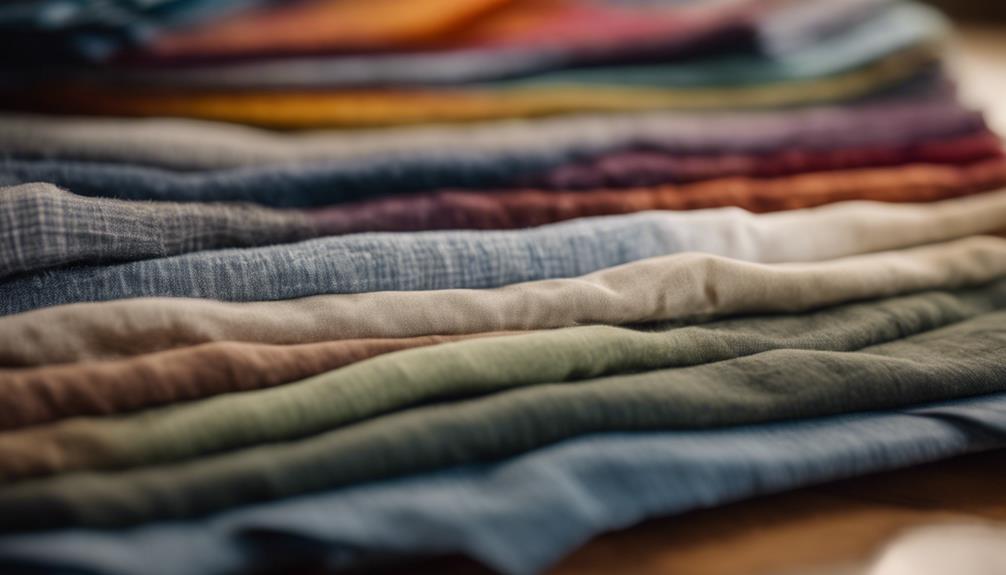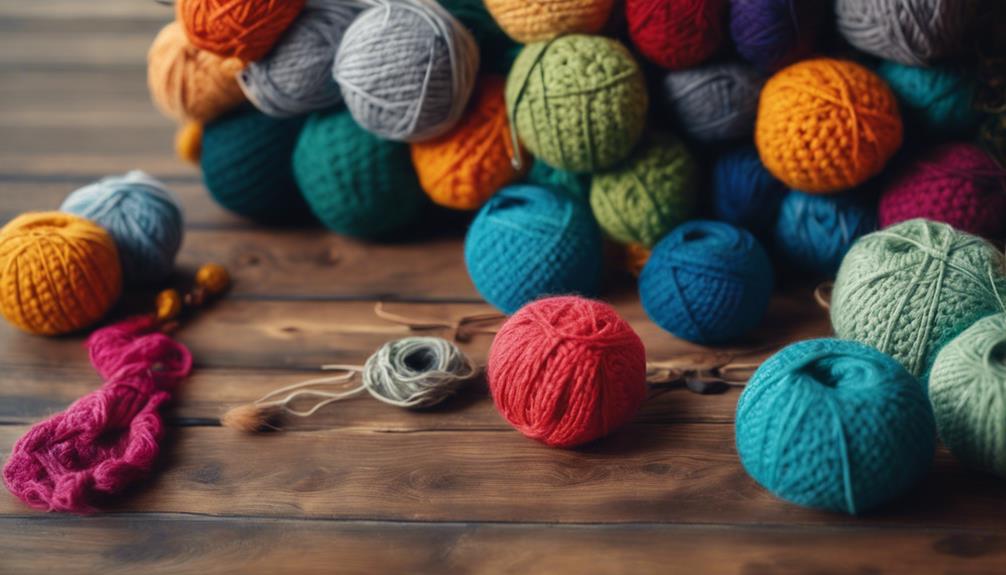Spotting sustainable fashion is easier than you think! Start by evaluating a brand's values and look for their sustainability mission statement. Check for eco-friendly materials like organic cotton or Tencel, and search for certifications such as GOTS and Fair Trade. Explore secondhand options to save unique pieces and reduce environmental impact. Also, verify ethical practices by ensuring fair wages and safe conditions for workers. Finally, embrace clothing care and repair techniques to extend garment life. These tips can empower you to make smarter choices and uncover deeper insights into sustainable fashion's positive impact! When incorporating sustainable fashion tips into your lifestyle, don’t forget to consider the longevity and versatility of the garments you purchase. Investing in timeless pieces that can be styled in multiple ways and withstand the test of time is key. Additionally, supporting local and independent designers who prioritize sustainability in their production processes can also contribute to a more ethical and eco-friendly fashion industry. By following these sustainable fashion tips, you can make a positive impact on both the environment and the industry as a whole.
Key Takeaways
- Check for sustainability mission statements and certifications like GOTS and Fair Trade to confirm a brand's commitment to ethical fashion.
- Look for natural and eco-friendly materials such as organic cotton, hemp, and Tencel in clothing items.
- Explore secondhand shopping options to reduce environmental impact and participate in a circular economy.
- Research a brand's supply chain transparency to ensure ethical labor practices and fair wages for workers.
Assess the Brand's Values
When you assess a brand's values, you should research its sustainability credentials to guarantee it genuinely prioritizes eco-friendliness. Start by checking the brand's website and social media for its sustainability mission statement, which can reveal its commitment to ethical fashion and environmental responsibility.
Look for specific certifications like GOTS (Global Organic Textile Standard) or Fair Trade, as these indicate adherence to strict environmental and social standards.
Pay attention to the materials used in their products. Brands that focus on sustainability often incorporate eco-friendly materials such as organic cotton, Tencel, or recycled fabrics, which markedly reduce the environmental impact of production.
Additionally, examine the brand's production transparency and supply chain information. Brands that openly disclose their practices are more likely to be genuinely committed to sustainable practices.
Identify Sustainable Materials

To identify sustainable materials, focus on natural fabrics like organic cotton, hemp, and Tencel, which are both biodegradable and resource-efficient. By choosing these materials, you contribute to a more sustainable fashion industry.
Here are some key aspects to take into account:
- Look for certifications like GOTS (Global Organic Textile Standard) and OEKO-TEX, which guarantee eco-friendly production practices.
- Seek out recycled materials made from post-consumer plastics or reclaimed textiles to minimize waste.
- Investigate the sourcing practices of sustainable brands; those that share their supply chains often prioritize better materials.
When you focus on these elements, you can make informed choices that support sustainable fashion. By opting for biodegradable options and recycled materials, you help reduce the impact on our planet.
Explore Secondhand Options

Exploring secondhand options not only helps you find unique pieces but also considerably reduces your environmental impact. When you shop secondhand, you're actively participating in a circular economy that promotes sustainability. Thrift stores and online marketplaces like ThredUp and Poshmark offer a treasure trove of unique and vintage clothing, allowing you to express your style without contributing to fast fashion's harmful effects.
By buying used items, you can considerably reduce your carbon footprint. For example, purchasing a secondhand dress can save about 21.4 lbs of CO2 emissions compared to buying new. This not only saves you money but also lessens the environmental impact associated with manufacturing and transporting new garments.
With the growing popularity of secondhand shopping, it's clear that many consumers are choosing to shop secondhand as a way of buying better. Retailers like Levi's SecondHand and Patagonia Worn Wear are leading the charge, encouraging you to embrace secondhand options.
Check for Ethical Practices

Checking for ethical practices in fashion brands guarantees that your purchases support fairness and sustainability.
When you choose to buy from brands that prioritize ethical practices, you're not just investing in your wardrobe; you're supporting a movement that values workers and the environment.
Here are some key points to evaluate:
- Certifications: Look for labels like Fair Trade, GOTS, or OEKO-TEX, which indicate adherence to ethical labor practices and sustainable production.
- Transparency: Research how open the brand is about its supply chain. Brands that share sourcing and labor practices are more likely to maintain ethical standards.
- Fair Wages: Confirm the brand pays fair wages and provides safe working conditions for its workers. Ethical fashion prioritizes the well-being of laborers.
Embrace Clothing Care and Repair

Embracing clothing care and repair not only keeps your wardrobe looking fresh but also plays an essential role in reducing waste and promoting sustainability in fashion. By focusing on proper maintenance, you can greatly extend garment life and minimize waste. Regularly using tools like steamers and fabric shavers helps maintain the garment condition, ensuring your quality clothes last longer.
Always follow specific care instructions for different fabrics to prevent damage. This simple step can considerably reduce the need for replacements and lessen your environmental impact. Learning basic clothing repair techniques empowers you to fix small issues rather than discarding items. Studies show that extending clothing use by just one year can reduce carbon emissions by 24%.
When faced with more significant damage, don't hesitate to seek professional tailoring services. Repairing rather than replacing supports a culture of sustainability in fashion. By integrating these practices into your routine, you contribute to a more sustainable wardrobe while enjoying your favorite pieces for years to come.
Frequently Asked Questions
How Can You Contribute to Sustainable Fashion?
You can contribute to sustainable fashion by supporting ethical brands, shopping secondhand, adopting a one-in, one-out policy, participating in clothing swaps, and caring for your clothes properly, extending their life and reducing waste. Exploring sustainable fashion support resources can help you make more informed choices and discover initiatives promoting eco-friendly practices. Educating yourself about the environmental impact of fast fashion empowers you to advocate for a more sustainable future. By taking these steps, you actively contribute to reducing the industry’s carbon footprint and fostering a culture of conscious consumption.
How Can I Be Fashionable Sustainably?
You can be fashionably sustainable by embracing eco-friendly materials, supporting ethical brands, investing in timeless pieces, exploring secondhand treasures, and prioritizing transparency. Your wardrobe will shine brighter than a thousand suns while helping the planet!
How Do I Know if My Clothes Are Sustainable?
To know if your clothes are sustainable, check for certifications like GOTS or OEKO-TEX, research the materials used, and evaluate the brand's transparency and commitment to ethical practices and waste reduction.
How Do You Make a Fashion Show Sustainable?
To make a fashion show sustainable, you can use eco-friendly materials, partner with ethical brands, implement a zero-waste policy, promote secondhand wardrobes for models, and choose energy-efficient lighting and transportation options.
Conclusion
By keeping an eye on these tips, you can navigate the world of sustainable fashion like a skilled sailor charting a course through uncharted waters.
Embrace brands that align with your values, choose materials that tread lightly on the Earth, and don't shy away from secondhand gems.
Remember, every thoughtful choice you make helps weave a brighter, more sustainable future for fashion.
So, let your wardrobe reflect your commitment to the planet—one stylish piece at a time!









